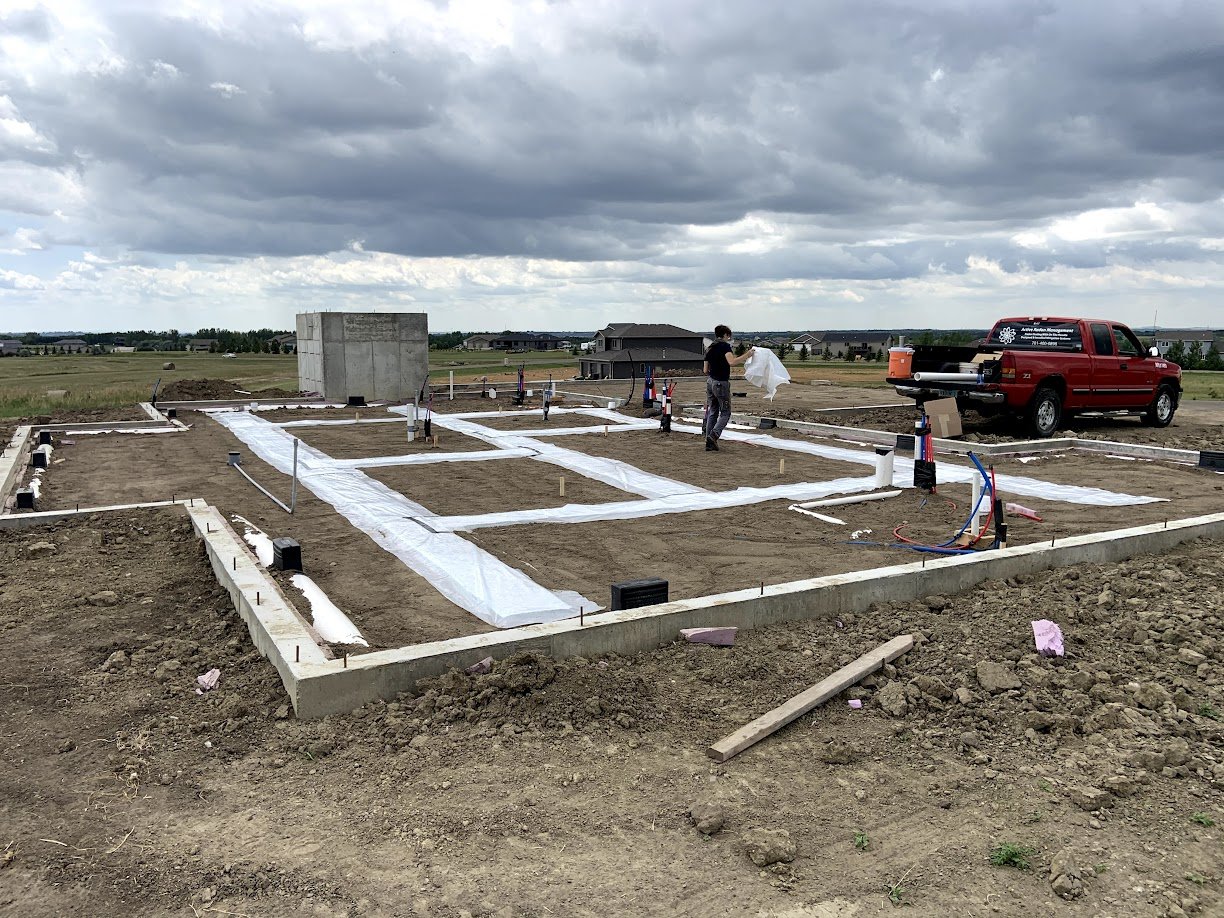New construction mitigation is the easiest and most cost effective way to make sure your home is radon resistant upon completion before you move in.
New construction full mitigation systems are complete systems that only need to be plugged in when home construction is finished.
A radon ready system consists of a dedicated PVC pipe that is run from the mechanical room through the roof. This pipe is installed within the walls after framing is complete but prior to drywall being hung so that the system is not visible outside of any space that is unfinished. The pipe is then capped and marked as a radon pipe.
If your home is slab on grade, we offer drain tile installation before the concrete slab is poured to allow for proper airflow. We would then attach the radon mitigation system to the port that is attached to the drain tile.
Once the pipe is in the attic, the radon fan is attached per code. The fan should never be placed in a conditioned living space such as the basement or under the stairs. The home builder should have their licensed electrician place an electrical outlet in the attic to be able to plug the fan into post construction. These systems also include a clear acrylic lid (with a clean out port for easy access to be able to service your sump bucket) to seal the sump bucket, as well as a manometer so that the home owner can monitor the pressure reading of the fan. The sump lid can also accommodate a sump pump as well. One post construction test is included upon request.
Radon mitigation is not a required component of home building in the state of North Dakota. Check with your builder to see if a radon system will be installed in your home. Make sure the mitigation tech installing your system is certified through the NRPP, AARST or NRSB. If there is no one installing a mitigation system in your home, give us a call! We work with any home builder/contractor. Certifications, licenses, proper insurance and radon fan knowledge are very important and make a difference in correct installation!
Don’t let a contractor or realtor tell you radon is “no big deal” or “fake news” or “costs too much”. Stay informed and be your own advocate.
While todays modern building codes make homes more efficient than ever, they also cause them to be “tighter” than ever. By tighter, we refer to negative pressure, meaning there is less air inside the home than outside, and there are less pathways for air to travel in and out of your home.
For example, older homes may have flagstone, block, or brick walls whereas newer homes have solid poured concrete foundations and spray foam insulation. Windows and doors have become far more efficient as well. There is no denying building has become better overall, except when it come to radon.
This affects how radon enters the home as well since bath fans, range hoods, dryers, and furnaces increase negative pressure when running and increase those levels further as the structure draws air from underground through small cracks in the foundation and sump pits connected to drain tile to alleviate the pressure.


